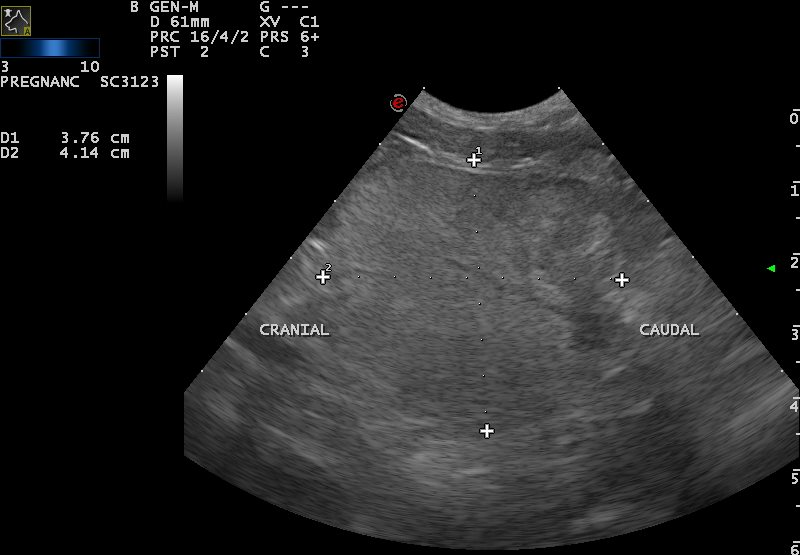
Reproductive Disease Management
Diseases related to the reproductive tract are common and complex and there are lots of them. Two of the most commonly occurring reproductive diseases are discussed here, pyometra in bitches and queens and prostate disease in the dog.
Pyometra
Pyometra in the bitch and queen is a hormonal disease. The ‘recipe’ for pyometra to occur is progesterone influence on an oestrogen primed uterus. Whilst cats are induced ovulators, meaning many don’t encounter a progesterone influence following their heat cycle, up to 50% of cats can spontaneously ovulate predisposing them to pyometra. During the heat period, oestrogen causes the glands of the uterus (these secrete a uterine milk to nourish the developing embryos after fertilisation) to burrow deep into the uterine lining, while the subsequent high progesterone levels after ovulation stimulate these glands to dilate and secrete the uterine milk. With repetitive empty cycles these glands can become cystic and prone to infection. It must be noted though that there is some evidence to suggest that some molecules or bacteria can irritate the uterus and create this cystic change as well, hence why we see it in young animals sometimes. Pyometra always occurs following a heat cycle and classically presents 2-4 weeks after the heat cycle. The affect animal usually presents with lethargy, increased drinking and urination and a purulent (infected) vaginal discharge.
Traditionally the treatment of choice for pyometra is desexing. This recommendation though is not my first recommended treatment in most cases. Subjecting an animal to anaesthesia which can be quite unwell with blood poisoning is a risky procedure, and the procedure itself has high risk of contaminating the abdomen with pus. In most cases nowadays we would recommend treating the pyometra medically first and stabilise the animal. If the animal is intended to be bred with in the future then we can undertake treatments to treat the underlying cystic uterine disease to allow for pregnancy to ensue. Even if the animal is not intended for breeding I would recommend medical therapy first to stabilise the animal and then we would recommend ovariectomy at a later point once the female is nice and healthy, before she comes into heat again. Immediate surgery following diagnosis of pyometra is not necessarily the best and only treatment to undertake.
For breeding animals, once the pyometra and underlying disease has been successfully treated, the final stage of the treatment is to have a litter, and I have a number of treatment options to maximise the pregnancy success.
Prostate disease
Prostate disease in the dog most commonly occurs in entire males over 4 years age, however it can occur at any age. Whilst cysts can occur as a developmental thing in the prostate, they are not common. The most common disease of the prostate is Benign Prostatic Hypertrophy (BPH). 60% of entire males over the age of 6 years will have some degree of BPH. Clinically dogs with BPH present with blood dripping from the prepuce, blood in the urine and often straining to defecate. After working up a diagnosis, there are both medical options for treatment to maintain and improve sperm quality and fertility, or if breeding is not required there are both medical and surgical options for treatment which will result in sterility.
Prostatic cancer is not common in the dog (0.7% incidence). There are some papers suggesting there is a higher incidence of prostate disease in desexed dogs, the papers are questionable in their definitions of desexed dogs, so I don’t believe this is accurate. What it does show is that desexing is not protective of a dog developing prostate cancer. Sadly, prostate cancer is a slowly progressive disease and poorly responds to chemotherapy or radiotherapy. By the time prostate cancer presents, it has usually spread elsewhere throughout the body.



